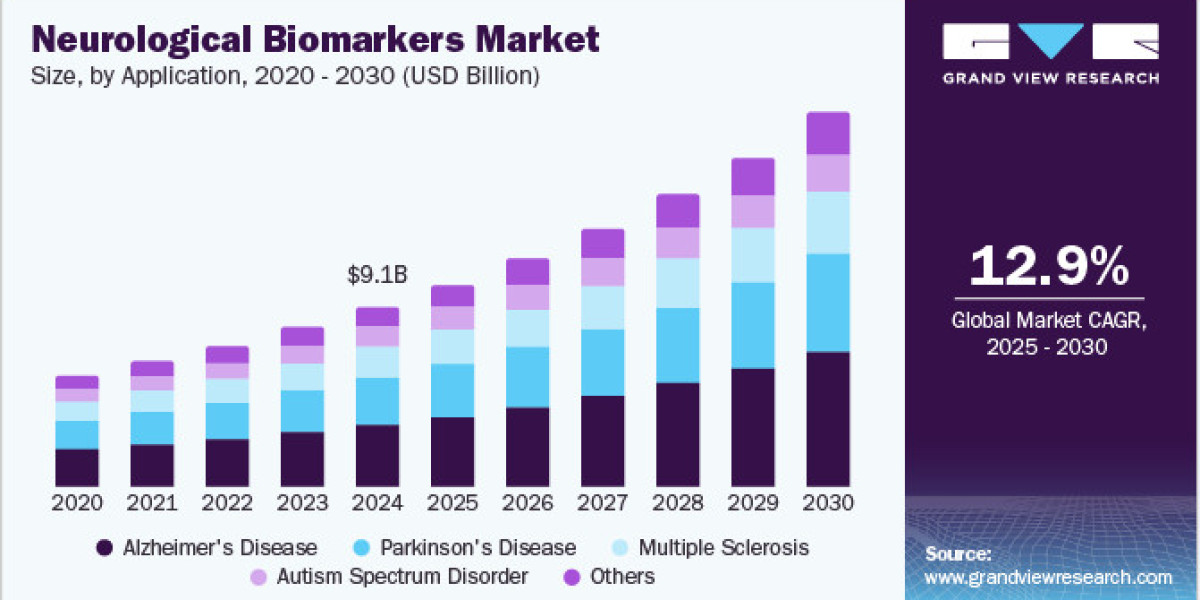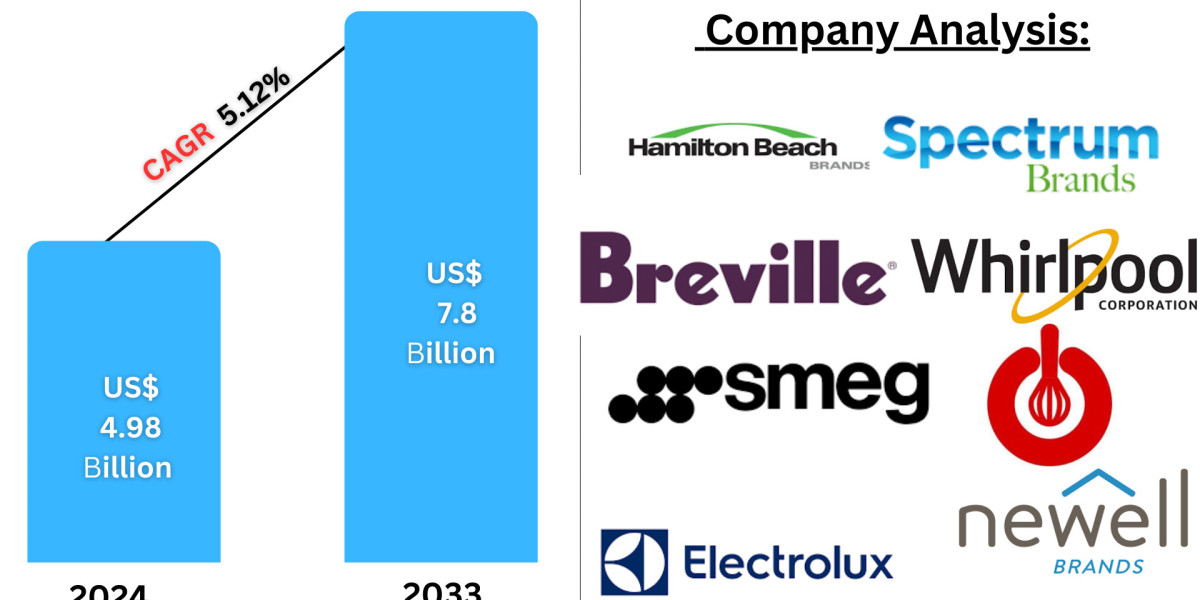The global neurological biomarkers market was valued at USD 9.1 billion in 2024 and is projected to grow at a compound annual growth rate (CAGR) of 12.9% from 2025 to 2030. Key drivers of this growth include the rising prevalence of neurological disorders and increasing awareness among both physicians and patients. Additionally, advancements in technology and ongoing R&D efforts aimed at developing treatments for neurological diseases are further supporting market expansion.
The integration of biomarkers into both clinical practice and neurological research has significantly contributed to market growth. Technological improvements have enhanced the accuracy and sensitivity of biomarker assays, enabling more rapid and precise disease detection. Cross-disciplinary innovations in neurology are continuously broadening the biomarker landscape, propelled by a deeper understanding of disease mechanisms and the capability to analyze multiple biological variables with high precision.
Neurological biomarkers are essential tools for clinical diagnosis, risk assessment, prognosis evaluation, monitoring disease progression, and assessing treatment response. In clinical trials, these biomarkers aid in patient stratification, validating target engagement, monitoring the biological effects of treatment, and evaluating drug efficacy and safety. Their growing relevance in drug development and personalized medicine is leading to broader adoption by pharmaceutical companies and research organizations.
Applications Insights
In 2024, Alzheimer’s disease represented the largest market share at 34.80%, a trend expected to continue over the forecast period. This is attributed to the increasing incidence of Alzheimer’s and rising awareness about early diagnosis and intervention. Notably, Labcorp’s introduction of the pTau217 test in 2024 marked a significant advancement in Alzheimer’s diagnostics. This biomarker is a vital indicator of tau pathology and supports early detection and disease monitoring, particularly in patients receiving anti-amyloid therapies. With 6.7 million Americans currently affected—a number expected to rise to 13.8 million by 2060—there is a growing demand for accurate and minimally invasive diagnostic tools. Labcorp’s pTau217 complements its existing biomarker portfolio, which includes the beta-amyloid 42/40 ratio, neurofilament light chain (NfL), and the ATN Profile—a panel covering various Alzheimer’s-related pathologies. This launch provides clinicians and biopharma companies with a powerful resource for clinical trials, early diagnosis, and treatment monitoring, marking a major step forward in neurodegenerative disease diagnostics.
Get a preview of the latest developments in the Global Neurological Biomarkers Market! Download your FREE sample PDF today and explore key data and trends
Type Insights
Proteomic biomarkers held the largest market share in 2024 at 30.62%. These biomarkers play a crucial role in the early diagnosis and monitoring of neurodegenerative diseases such as amyotrophic lateral sclerosis (ALS) and Parkinson’s disease (PD). Proteomic research has identified specific protein alterations linked to neuronal degeneration. For example, in ALS, abnormal accumulation of TDP-43 protein in neurons has been observed, while in PD, changes in α-synuclein and its post-translational modifications have provided new insights into disease mechanisms and potential therapeutic targets. Technological advances in mass spectrometry and bioinformatics have enhanced the ability to detect and measure these protein changes in biological samples like cerebrospinal fluid and plasma. This has accelerated the use of proteomic biomarkers in both clinical and research settings. The rising prevalence of neurodegenerative conditions and the need for personalized treatment approaches continue to drive demand for proteomic biomarkers.
End Use Insights
In 2024, pharmaceutical and biotechnology companies accounted for a substantial 50.39% share of the market. This dominance is driven by increased investments in drug development for neurodegenerative diseases and a rising demand for highly sensitive biomarker assays. These companies are central to advancing biomarker research that supports diagnostics and therapeutics for conditions such as Alzheimer’s, Parkinson’s, and ALS. The focus on precision medicine and early diagnosis further supports their leading position in the market.
Regional Insights
North America led the neurological biomarkers market in 2024, holding approximately 41.47% of the global share. The region is expected to continue experiencing strong growth due to increased recognition of biomarkers' potential in drug development. The presence of key regulatory bodies also contributes to the region’s leadership by promoting awareness and supporting the adoption of biomarker-based therapies in disease management.
Leading Companies in the Neurological Biomarkers Market
The following companies are key players in the neurological biomarkers space and collectively influence major market trends:
Abbott
Thermo Fisher Scientific, Inc.
Merck & Co., Inc.
Bio-Rad Laboratories, Inc.
Johnson & Johnson Services, Inc.
DiaGenic ASA
BANYAN BIOMARKERS, INC.
Quanterix
Alseres Pharmaceuticals, Inc.
Rules-Based Medicine
C2N Diagnostics
Gather more insights about the market drivers, restrains and growth of the Neurological Biomarkers Market








